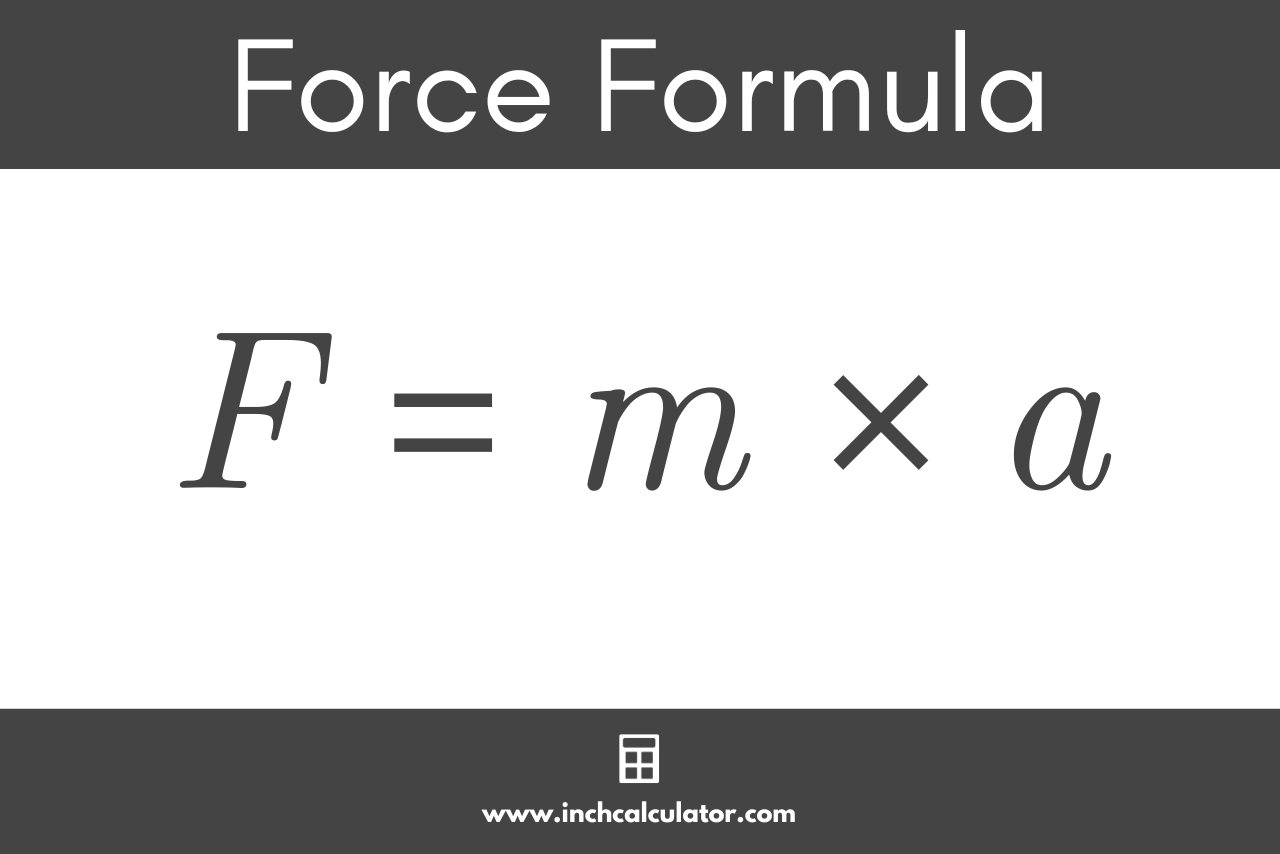Force Calculator – Find Force, Mass, & Acceleration
Use our force calculator to solve force, mass, or acceleration given any two variables.
Force:
Force Formula
Mass Formula
Acceleration Formula
On this page:
How to Calculate Force
In physics, force is any interaction that, when unopposed, will change the motion of an object. A force can cause an object with mass to change its velocity, e.g. to accelerate.
Force can be described as a push or pull upon an object resulting from its interaction with another object, as is the case with gravitational forces.
The standard unit of force in the International System of Units (SI) is the Newton (N). One Newton is defined as the force required to accelerate one kilogram of mass at the rate of one meter per second squared.
To calculate force, you need to use Newton’s second law of motion.
Force Formula
Newton’s second law of motion provides the formula for calculating force. It states that the force acting on an object is equal to the mass of that object multiplied by its acceleration.
This can be expressed mathematically as:
F = m × a
Where:
F = force
m = the mass of the object
a = the object’s acceleration

For example, imagine a car with a mass of 1,000 kg accelerating at a rate of 2 meters per second squared (m/s²). To find the force exerted on the car, we can plug the values into Newton’s second law formula and solve.
F = 1,000 kg × 2 m/s²
F = 2,000 N
Thus, a force of 2,000 Newtons is required to accelerate the car at the given rate.
Newton’s Laws of Motion
Newton’s laws of motion, formulated by Sir Isaac Newton in the late 17th century, are fundamental to understanding physics and how various forces affect motion. These laws not only offer a theoretical framework but also practical tools for calculating and predicting the effects of forces on the motion of objects.
Newton’s first law, often called the law of inertia, states that an object at rest will stay at rest, and an object in motion will continue in motion with the same speed and in the same direction unless acted upon by an unbalanced force. Centripetal force is an example of this.
Newton’s second law, as we discussed above, states that the force acting on an object is equal to the object’s mass
multiplied by the object’s acceleration.
Newton’s third law states that for every action, there is an equal and opposite reaction. This means that whenever an object exerts a force on another object, the second object exerts an equal and opposite force on the first. This concept is crucial for finding the normal force exerted on an object.
Individual Forces vs. Net Force
Force is often discussed in terms of both individual forces and net force.
A force is any interaction that can change the motion of an object, such as pushing, pulling, or the effect of gravity. These individual forces can act on an object simultaneously but in different directions and magnitudes.
Net force, on the other hand, is the vector sum of all the individual forces acting on an object. It represents the overall force that determines the total acceleration of the object according to Newton’s second law of motion.
If multiple forces are acting on an object, you calculate the net force by adding up all the forces taking into account their directions; forces in opposite directions negate each other.
For instance, if two people push on a stationary car from opposite sides with equal force, the net force is zero, meaning the car will not accelerate. The net force is crucial for understanding the actual motion changes of an object since individual forces may counteract each other, leading to no change in motion despite the presence of strong forces.
You might also be interested in calculating spring force using our spring constant calculator.

